The day we arrived, we were supposed to meet the owner of the school to go to our family. We got to the main plaza early so decided to go to a restaurant-bar on the plaza. The Guatemalan under 20 team happened to be playing their first game of the World Cup and it started right when we sat down. After a good meal we decided to have a couple more beers and watch the game. We noticed a crowd starting to gather in the plaza but didn´t think much of it. Until a huge parade passed through right in front of us. The bike was trapped in the middle of the crowd, so we had no choice but to enjoy the parade and be late for our meeting. The parade consisted of a princess on a car and then lots of marching bands playing all kinds of random tunes.
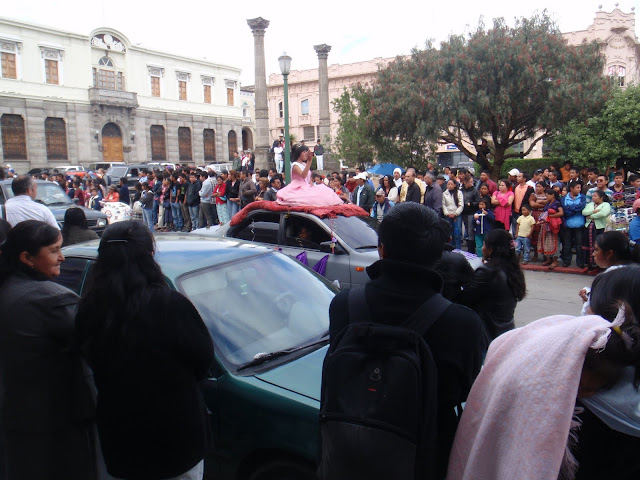

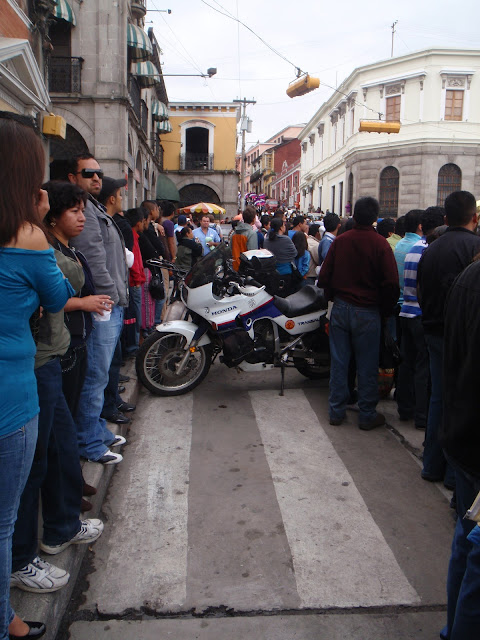
Jill had researched language schools in Guatemala and decided on
El Quetzal in Xela because it was cheap and had good reviews. (If anyone is planning on going there, do not worry about pre-registering because they will have room for you, and you can save the registration costs.) We stayed with a host family that has been hosting for over 14 years. Our host mom Estel was great, as was the rest of the family, whom we seemed to meet more and more of every day we were there. We got 3 meals a day with our mom, always good and almost always with beans and fried plantains. No matter how often we eat them, we still are yet to get sick of beans (and fried plaintains). The school was as advertised and was everything a spanish school should be. Classes were from 8am - 1pm with 1 on 1 instruction. Jill really liked her teacher Heber, and felt that she learned a lot in 2 weeks. Classes increased her understanding significantly and she was able to learn verb tenses so she is making more sense to other people too. Mike´s Spanish was already pretty good and he hoped a week of class would help with his conversational Spanish. It helped bring some rules back into his head, but he´s convinced that practicing at cantinas may help to improve his vocabulary even more than any school possibly can.

(Jill with her teacher Heber at school)
After class, there were free activities like lectures about popular expressions and the civil war. On Thursdays there was a cooking class all the students and teachers regularly attended and was a good way for us to get to know each other outside of class. The school also offers an opportunity to visit a neighboring community every week. In Salcajá, we saw one of the oldest churches in C. America, a textile loom, and got to sample some caldo de fruta ("fruit soup"), basically moonshine in fruit form.

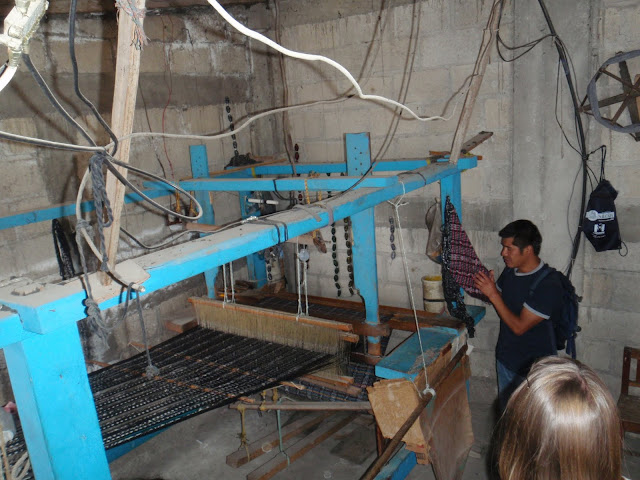

We also went to Zunil, with a 99.9% indigenous population. Their market was throughout the town and had the largest carrots I have ever seen. They also had a saint of vices that we visited. No picture attached because you have to pay 10 quetzals to take a picture of him. He smokes and drinks and has an American flag on his back usually.
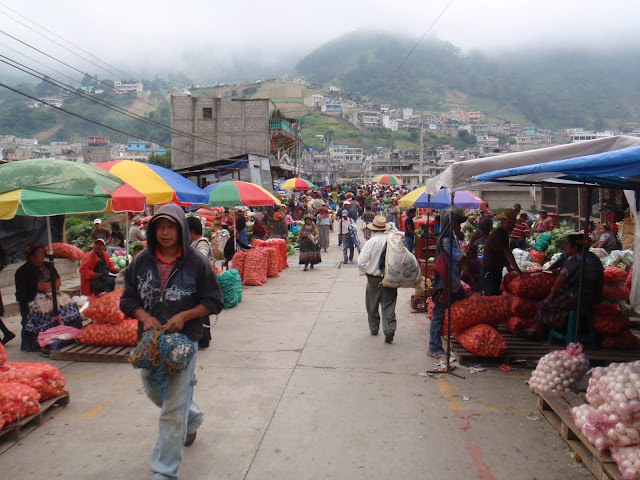
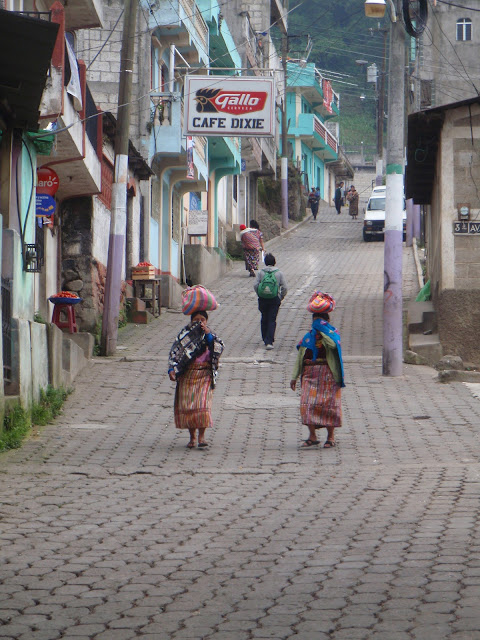
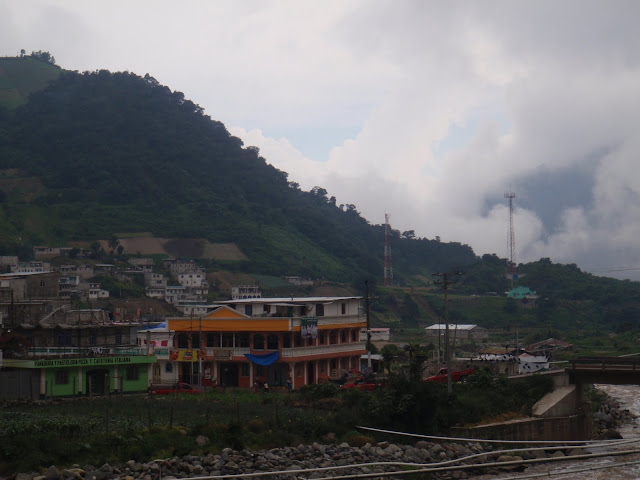
Spanish class consumed a majority of our time, but we did do some exploring of the city. Xela is rather large - Xelaites are proud that it is the 2nd largest city in Guatemala, larger than Antigua and don´t forget it. It is rather cold because it is at a pretty high elevation and it has only two seasons, cool and dry ("verano") and cooler and rainy ("invierno"). Initially we were confused how we were in Xela in winter even though we visited in August, but then the rains helped us figure it out. The city is rather concrety - even parks have very little green space. There is an ex-pat and language school presence, but not overwhelmingly so. For all its lack of charm, it was still somehow a bit charming.
We even met a couple from Jill´s hometown area (which is surprising because her hometown is very small) who are running a cafe called Aeropagus. We stopped in one afternoon and really enjoyed their cinnamon rolls. The rest of our time was largely spent at the internet (although you wouldn´t know it from our lack of blogs), doing homework and running random errands to get us ready to travel again.
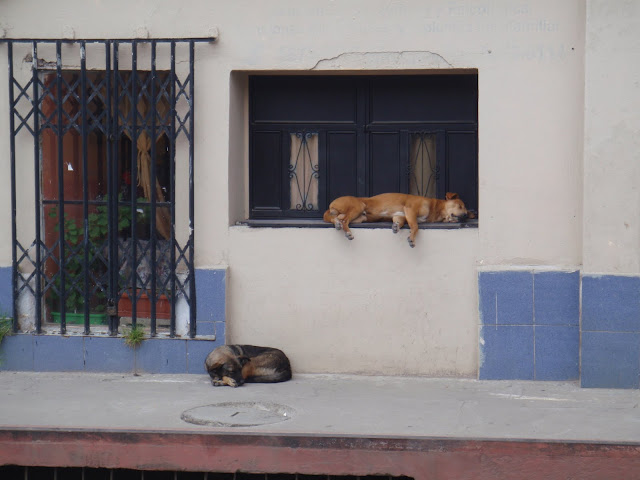

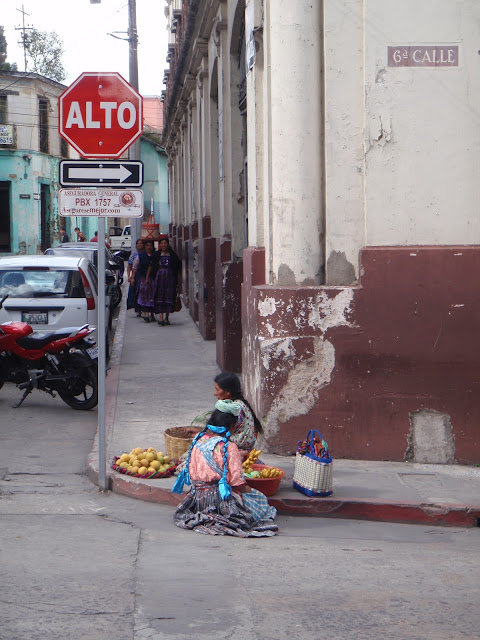


(obligitory chicken bus shot)
Mike took the second week off from school to do some motorcycle maintenance. I visited
a shop that I heard about on Horizons Unlimited to see about getting some parts and work done. Alex the mechanic was very helpful on the whole, and we basically split the work, allowing me to get even more familiar with the TA. It was time to check the bearings, check the valve clearance, sync the carbs, change the plugs, clean the air filter (a new one is waiting for me in El Salvador), service the radiator, and change the oil.
We took things apart during the morning hours on Tuesday, draining the radiator, and then fully cleaning the carbs which was absolutely necessary - the pilot jets were both almost completely clogged with sediment. (Getting the carbs back on the TA was a task in and of itself.) The wheel bearings all seemed to be in good shape, so we greased them back up and let ´em roll. The plugs had burned decently, showing a slightly lean condition which is not surprising given the condition of the pilot jets and the original factory jetting. Luckily I was splitting the work with Alex, or we would only have received 2 new plugs, instead of the needed 4. I guess that shows that it pays to do it yourself. But it makes it a whole lot easier to have access to good tools.
It was a decent experience working with Alex at the shop. The downsides were the following:
- we did not check valve clearance. Alex, another mechanic, and myself just listened to the motor when I arrived and didn´t hear any valve noise. Based on that, he didn´t want to do any adjustments. There has not been any power loss or changes in performance, so he didn´t want to fix something that´s not broken. I suppose I could´ve demanded it done, but left it at that.
- we did not fully flush the radiator. All that was done was drain, rinse, and fill. The rinse did not show any rust or deposits coming out, so all in all the radiator is in good shape. But it still would´ve been better to fully clean before refilling.
- we did not sync the carbs. They did not have a Twin Max, or carb sticks, or apparently any other way to measure vacuum difference between the carbs. Thankfully, I dropped in another shop that I found out about on Horizons Unlimited and was able to borrow his Twin Max. All it took was a part to be turned down for the vacuum access on the front cylinder. He charged me Q75, which was greatly marked up, but he did all the running around town for it, so still not too bad of a deal at US$9.
The best part about working there is that they charged me for a major service for a 500-1000cc bike - Q250. That´s around $32. Both Alex and I worked on the bike for all of Tuesday, and then I took up a part of their service bay on Wednesday morning to button everything back up. I will gladly pay $32 to use their ratchets and lift instead of hacking at all of this maintenance with my on-board tools.
The final task was to change the oil, but I took off and did that at a small shop near our place. That´s easier to do with my small set of tools, and I already had a couple liters of oil from the last service. I borrowed an oil pan, got it drained and filled back up, and even got a washer from those guys. I asked if I could chip in anything for that, and they said no. But I gave them Q5 for their space. It´s at least enough for a Coke later.
Roberto, at the shop where I was able to use the Twin Max, knew of a good metal worker who was willing to take a look at our side racks, which were in need of some basic repairs and reinforcement. It turns out his connection was perfect - Carlos Wilberth González at Taller San Carlos (Diag 11 7-63, Zona 1 in Xela, tel: 7765-3557 y 4117-6834). He was smart, creative, able to address the issue correctly, and does excellent work! He re-fabbed our saddle bag racks for Q300. Not bad given that new racks cost much more than that, often US$200. Basically he started from scratch, using our old GIVI soft bag supports as a guide, but then extending the new racks lower and giving them more support. The finished product looks fantastic and is holding up well so far (even through our "road testing").




